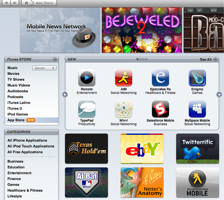iPhone 2.0 and all kinds of little mobile RIAs


The mobile world is incredibly fragmented. That makes distribution, development, and everything in between much more complex than it should be. The iPhone is far, far from open, but with that lock comes an ease of use for both the user and the developer. Developers know exactly what the platform they're building for can do and users know that the applications they download are going to work. The App Store is by far one of the best delivery mechanisms for mobile RIAs and even though I haven't actually paid for any applications yet, the built in monetary possibilities are good news for developers. And because Apple already has the processes in place to do monetary transactions, this was basically no cost to them.
The applications also show a lot of diversity. The typical Web 2.0 players are there (I grabbed a Facebook app, the Yelp app, NetNewsWire (which I love). And there a number of game and other productivity tools. From a developer standpoint it seems like it's fairly easy to create a consistent look and feel between both web properties and native Cocoa applications. That's a powerful draw as brand continuity becomes more important.
I was a little skeptical that all this would work and as a user and Adobe evangelist I'm still annoyed that there is no Flash on the iPhone, but Apple has a great RIA platform on their hands. Everyone out there with mobile platform ambitions should take a note. Now I just can't wait for iPhone 2.0